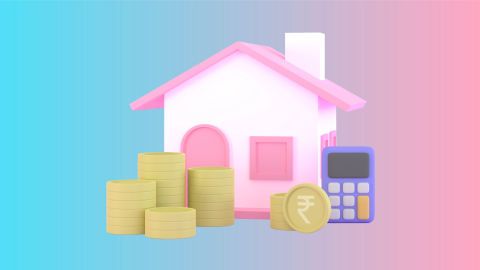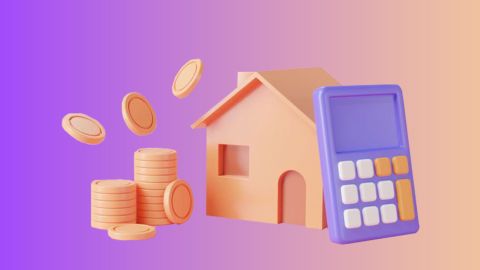A House Rent Allowance (HRA) is a significant aspect of a salary structure for individuals living in rented accommodations. In India, it is one of the key salary components that provides tax benefits to employees. The Income Tax Act allows individuals to claim HRA to lessen their taxes. However, calculating HRA and understanding how it impacts your tax liability can be complicated. This is where an HRA calculator becomes valuable.
HRA calculator is a tool that helps you determine the exempt HRA amount you could claim under section 10 of the Income Tax Act. It eases the process of calculating HRA, which otherwise involves complex mathematical computations. Before we delve into using the HRA calculator, let's understand HRA:
Understanding House Rent Allowance
HRA is a specific allowance given by employers to employees to meet their rental expenses. It is part of the salary structure and is taxable under the head 'Income from Salary.' However, under Section 10(13A) of the Income Tax Act, a portion of HRA can be exempted from tax, subject to certain conditions.
Importance of HRA
HRA provides significant tax benefits, especially for employees living in rented houses. It helps reduce the taxable income, thereby lowering the overall tax liability. The exemption amount depends on several factors such as the city of residence, actual rent paid, and the basic salary. Understanding these factors is crucial for effective tax planning and maximising tax savings.
Calculating HRA exemption
The exemption is determined by the least of the following three amounts:
- Actual HRA received from your employer.
- 50% of your basic salary (if you live in a metro city like Mumbai, Delhi, Chennai, or Kolkata) or 40% of your basic salary (if you live in a non-metro city).
- Actual rent paid minus 10% of your basic salary.
Here’s a step-by-step example to illustrate:
- Actual HRA received: Rs. 1,00,000
- Basic salary: Rs. 50,000 per month
- Rent paid: Rs. 15,000 per month
First, calculate the annual figures:
- Basic salary: Rs. 50,000 * 12 = Rs. 6,00,000
- Rent paid: Rs. 15,000 * 12 = Rs. 1,80,000
Next, determine the three amounts:
- Actual HRA received: Rs. 1,00,000
- 50% of basic salary: 50% of Rs. 6,00,000 = Rs. 3,00,000 (for metro cities)
- Rent paid minus 10% of basic salary: Rs. 1,80,000 - 10% of Rs. 6,00,000 = Rs. 1,80,000 – Rs. 60,000 = Rs. 1,20,000
The least of these three amounts is Rs. 1,00,000, which is the HRA exemption you can claim.
Factors affecting HRA calculation
Several factors impact House Rent Allowance calculation:
- Basic salary: Higher basic salary can lead to a higher HRA exemption.
- Rent paid: The actual rent you pay affects your exemption.
- Location: Living in a metro city like Mumbai or Delhi can increase your HRA exemption.
- HRA received: The amount of HRA given by your employer.
- Other allowances: Any other allowances or perquisites provided by your employer.
These factors are essential to consider when calculating your HRA exemption.
What is an HRA calculator?
An HRA calculator is a digital tool designed to help employees calculate their rent allowance exemption. This tool takes into account various factors like basic salary, actual rent paid, HRA received, and the city of residence. The main purpose of the HRA calculator is to simplify the complex process of determining the eligible HRA exemption. By inputting the required details, the calculator provides an accurate estimate of the tax-free HRA amount. This helps employees in efficient tax planning and ensures they utilise all available exemptions.
Here’s how to use an HRA calculator:
- Input basic salary: Enter your basic salary. Some calculators might ask for the annual amount, while others might require the monthly figure.
- Enter HRA received: Input the actual HRA amount you receive from your employer.
- Specify rent paid: Enter the actual rent you pay for your accommodation.
- City of residence: Select whether you live in a metro or non-metro city. This determines whether the 50% or 40% rule applies.
- Additional details: Some calculators might ask for other details like dearness allowance (DA) or commissions if they are part of the salary structure.
Once you enter all the required details, the calculator will compute the HRA exemption amount and display the result.
Benefits of using an HRA calculator
Using an HRA calculator has many benefits:
- Accuracy: Provides precise calculations of HRA exemption.
- Time-saving: Quick and easy way to compute your HRA exemption.
- Error-free: Reduces the chances of manual errors.
- Tax planning: Helps in better tax planning by understanding exemptions.
- Financial planning: Assists in managing your finances more effectively.
These benefits make an HRA calculator an essential tool for employees.
HRA tax exemption rules
HRA tax exemption is governed by specific rules:
- Section 10(13A): Under the Income Tax Act, HRA is exempt from tax.
- Metro vs non-metro: 50% of basic salary for metro cities, 40% for non-metro cities.
- Rent paid: Must be more than 10% of the basic salary.
- Actual HRA received: The exemption cannot exceed the actual HRA received.
- Proof of rent: Employees must provide rent receipts to claim the exemption.
Understanding these rules is crucial for accurate HRA calculations.
HRA calculation for different scenarios
HRA calculations can vary based on different scenarios:
- Single employee: Basic salary and rent paid are the primary considerations.
- Married employee: Combined rent of spouse can be considered if staying in the same house.
- Multiple properties: Rent paid for multiple properties can be included if they are in the same city.
- Living with parents: Rent paid to parents can be claimed, provided there is a valid rental agreement.
Different scenarios can affect the final HRA exemption, making it important to understand each case.
Common mistakes to avoid when calculating HRA
Avoid these common mistakes when calculating HRA:
- Incorrect basic salary: Ensure the correct basic salary amount is used.
- Wrong rent amount: Always use the actual rent paid.
- Ignoring city classification: Metro and non-metro cities have different rules.
- Not providing proof: Always keep rent receipts as proof.
- Misunderstanding exemption limits: Know the limits to avoid claiming excess.
Avoiding these mistakes ensures accurate HRA calculations.
Renting vs. buying a home: Which is better?
Now that you understand how to calculate HRA, let us explore whether renting or buying a home is more beneficial. This decision significantly impacts your lifestyle and finances, so it is essential to consider your long-term goals, financial stability, and personal preferences.
Renting offers flexibility and less responsibility for maintenance, making it ideal for those who might move frequently or prefer not to deal with potential home repair hassles. Conversely, buying a home using financial tools such as a home loan can be viewed as an investment that may appreciate over time. It provides the security of ownership and the freedom to customise your living space.
Tax benefits on buying a house
Purchasing a house comes with numerous tax benefits in India. One of the prominent advantages is the deduction available on the repayment of the home loan under various sections of the Income Tax Act. You can claim up to Rs. 1.5 lakh under Section 80C for the principal repayment. Additionally, a deduction of up to Rs. 2 lakh is available on the interest paid on the loan under Section 24(b). For first-time buyers, an additional deduction of Rs. 50,000 on interest can be claimed under Section 80EE. Also, if you're renting out your property, the entire interest paid can be claimed. Lastly, deductions under Section 80EEA offer a tax benefit of up to Rs. 1.5 lakh on interest payment.
Explore Bajaj Housing Finance Home Loan
Considering the financial and tax benefits of owning a home, now is the perfect time to explore home loan options with Bajaj Housing Finance. With competitive interest rates, flexible repayment options, and quick processing, Bajaj Housing Finance can help you turn your dream of homeownership into reality.
Here are a few reasons why you should opt for a home loan from Bajaj Housing Finance:
- Long repayment options: Benefit from extended repayment periods of up to 32 years, allowing you to choose a plan that best aligns with your financial situation, making repayment more manageable.
- Competitive interest rates: Start your journey to homeownership with attractive interest rates beginning at just 7.99%* p.a., and EMIs as low as Rs. 722/lakh*, making home ownership more affordable.
- Customisable loan options: Customize your home loan to suit your specific needs with varying loan amounts, and repayment terms, providing you with greater control over the home-buying process.
- Top-up loan facility: Increase your financial flexibility with a top-up loan facility, offering additional funds of Rs. 1 crore* or higher at competitive interest rates and minimal documentation, simplifying the management of a home loan balance transfer.
Consider this opportunity to enhance your financial planning while securing your dream home.




